Wild Thing
5 year old buck +
Great information Albert - Thanks for sharing.
And for the books - I am using zero synthetic fertilizer this year.
And for the books - I am using zero synthetic fertilizer this year.
I am just getting started in this type of system. Some very interesting reads here. I have not read them all yet, but have a question. Maybe it is addressed in one of the articles you guys posted. What affect does frost, freezing have on the microbes and fungal stuff? I assume there is a seasonal die off of a majority of those items in the top layers, or can they withstand the freezing temps. It gets mighty cold up here in WI on most winters.
Great information Albert - Thanks for sharing.
And for the books - I am using zero synthetic fertilizer this year.
I am just getting started in this type of system. Some very interesting reads here. I have not read them all yet, but have a question. Maybe it is addressed in one of the articles you guys posted. What affect does frost, freezing have on the microbes and fungal stuff? I assume there is a seasonal die off of a majority of those items in the top layers, or can they withstand the freezing temps. It gets mighty cold up here in WI on most winters.
With as good as your soils look - just keep cycling the nutrients, buddy!!!
Btw I put this video together a year or two ago. To help explain CtoN ratios. One thing I’d add that I didn’t do a good job explaining in video is
1. If too much N and not enough C we can mine our own OM - not good.
2. If too much C and not enough N - we simply won’t cycle nutrients and build OM over time.
In some of the podcasts I’ve done over time and shared here - I explain that as well. Hope this helps.
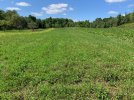
From a qualitative perspective, fairly quickly. As microbes are being fed (photosynthesis is occurring) they are going to continue to populate - this is where and why in the Spring it is important to have additional carbon elements to feed the microbes as well. Typically this is when we will see the clovers popping, alongside the decaying radishes - clovers exudates are feeding microbes and the microbes are balancing their diet with the C:N needs via the decaying brassicas. If we actually wanted to quantify this, I think the only way would be through a PFLA test (take on in the winter and then every month in Spring). Would likely need to do this year over year so we could see a running baseline average but get us a good idea on when the plants/microbes come out of full dormancy and at what soil temps. Would be a good experiment!!I totally understand the concept of snow being an insulator. We actually like a good, consistent snow cover up here. Couple of reasons…if you have a septic system, the snow helps keep heat in the ground for periods of intense cold. When we have wicked cold and no snow cover, the line from your house to the tank can freeze. Most often it is buried deep enough but sometimes not quite.
Also, farmers that run a lot of alfalfa and other forage ground see massive die off of those crops in years where we have little to no snow cover and see hard freeze, thaw, hard freeze, thaw…it kills alfalfa readily, especially if there are low pockets in the field.
I am a bit more curious on how long it takes to regenerate good microbe/fungal stuff in the spring to get the soil “back to work”?
Wow! That was really a revelation for me on C:N ratios Albert....and it helps explain a puzzling question that came up on my farm last year.
Take a look at this photo and take note of what you see. From L to R you see an acre of alfalfa (with some apple trees as well), a narrow strip of sugar beets/brassicas, a 1 acre strip of a cover crop which I had mowed 3 weeks earlier in order to spread the rye see to give me another crop of rye to supplement the clovers and vetch which were in the cover crop, and finally a 1 acre strip of sugar beets/brassicas. The photo was taken on August 30th last year in Upper Michigan - Zone 4a.
View attachment 42879
What you likely noticed was that the narrow strip of sugar beets/brassicas on the left is yellowish and appears to be lacking Nitrogen, whereas the larger strip of sugar beets/brassicas on the right are a deep green and not Nitrogen deficient at all. In fact the sugar beets and brassicas in the large plot on the right grew much larger and produced much bigger bulbs than those plants in the narrow strip. The kicker is that both strips had similar nutrient levels prior to planting and received the exact same amounts of fertilizer at planting and again a few weeks later when I top-dressed them with Urea. Truthfully, the narrow strip probably got a little more N because it was a thin strip and I wanted to make sure it was thoroughly covered.
How does this relate to C:N ratios? The previous year, the narrow strip had been planted to a screening mixture of Sorghum/Sudangrass, Milo, Millet...and maybe even another grass or 2 - all high in Carbon. The one acre strip on the right was in a 12-seed cover crop with plenty of clovers and hairy vetch in it as well as some cereal grains. In fact, it was planted at the same time and with the same seed as the cover crop you see here in the center after I had mowed it back down. I no-till planted both strips of sugar beets on May 18th after I had mowed the sorghum grass screen and sprayed both that and the cover crop to eliminate weed completion. I also broadcasted a brassica mix into the thinner spots in both strips on July 8th.
Just as you described in your video, it appears that in the strip on the left, my soil biology was insufficient to both break down all of the large grass stalks and feed my crop of brassicas with sufficient N to get good growth!
Lesson learned - Thanks for turning on the light bulb.
Thank you for the compliments. I can promise you when I started Vitalize Seed, I wanted to do two things 1. Help make the cycling processes and mixes easier with a One-Two system. 2. Educate others on soil conservation practices and how the soil functions (to the best of my knowledge) without any gimmicks, special groups, etc. Just information to help others. I absolutely love this stuff and Ive learned from others and I wish to continue this effort towards better soil conservation.
A few items -
1. Don't always assume that N is always causing yellowing, it could also be micros or even K. Soils are not immune to redox reactions. If you have soils that have a tremendous amount of tillage or fertilizers on them over the years, we can create situations where there is a robust amount of oxidized (tied up) nutrients in the soil profile. One common example is Iron. Also, too much nitrate fertilizer will pull CA off the soil colloid which can reduce CA uptake and cell wall structure of the plants. Remember all the soil nutrient relationships are synergistic or antagonistic- so as one goes up, another may come down inversely.
2. Based on your soils and your fantastic soil conservation tactics - I suspect you are dead on. You were not able to cycle the nutrients in that strip and you likely had "N tie-up" due to the massive carbon load and no pre/post N sources. It would have been interesting to see if you hit it with a foliar N, if they would have bounced back faster. I suspect you had a thick thatch of the grass species for a while?
This is a reason no-till fails for some - without proper cycling of nutrients, they create such a thick thatch they feel they can't get a healthy crop to grow. It's not that the crop won't grow healthy and green, we just need to balance our mixes and rotations. This is also why farmers for years have added N to the system in the fall to help break down corn stubble faster - very high C: N - need N in the system.
Maybe the foliar N application would have helped some but the granular Urea just didn't seem to green it up any. There were lots of pretty big stalks from the sorghum and milo after I mowed it...in fact, there still are. That is one reason I stopped planting corn - when you don't combine it you are left with tons of stalks....and when you are no-tilling, all you can do is mow the stalks and plant through them but the corn stalks lay on the surface for quite a few years. So dealing with the stalks was one reason I abandoned corn - the other is that It was costing me $225/acre to fertilize it and that was when fertilizer was a lot cheaper!
Another Question? I plan to rotate sugarbeets/brassicas into the cover crop that you see in the center of the photo above, this year. I expect that plot to have a fairly good C:N ratio as it includes legumes as well as rye. Next year I will rotate the sugarbeets/brassicas to the plot on the left which will have been in alfalfa/clover for 3 years by then. Would you recommend that I try to drill some cereal rye or something else into it later this year to give it a little carbon boost before planting into it next year?
Thanks again.
Great convo Wild Thing - I am going to use bullet points just to help myself stay on track, or try lol!
1. That is wild about the corn and such not breaking down - even with the N applications - that tells me your microbes are out of balance. Typically you'd have worms and other arthropods shredding these materials into more digestible materials for your fungi and bacteria to consume and release back into the soil profile. The fact that these are not being consumed tells us something is missing from the puzzle. I'd consider pulling a soil sample and sending in for Haney Test, PFLA test or a WARD Soil Health Assesment. We can then be more specific on the C02 respiration and at a minimum see if we notice its in the right ballpark or if for some reason it is lower than anticipated. I also suspect that as you added the N, the microbes were starving for N and it was confused but was not enough to feed them to sustain them to breakdown the thatch. I feel confident in the system I created that if someone wanted to do corn, they could ever 3-4 years, but they'd need to interested rows in fall to ensure we kept feeding the system.
2. As for the first scenario you present, yes by having the cover crop there you will allow yourself varing levels of Nitrogen and other nutrients to be available throughout the growing season for that crop. The rye will breakdown later and slowly feed the microbes as the clover thatchs already have. You will also keep your soil covered, longer, which is good for the reduction of compaction, soil temps, etc.
3. As for the third example - this is somewhat up to you. If you leave it in a clover/alfalfa blend as you have - it will deff have a lot of n in the system. The issue with these types of blends, is that when you terminate - will you have the other macros/micros you need without fertilization? Hard to say but it could be an issue. By adding rye, you will help to mine other nutrients that will become available later in the soil profile. However, you need to feed that plant as well - so that is absorbing some of the nutrients you want your subsequent plantings to have access to assimilating. Personally, I would add rye (at a minimum - look at my mixes, lol, I like diversity) but I want you to understand the entire picture as well as I do. The last thing about adding rye to the patch, it will help you to capture N that is in the nitrate form of the cycle. Nitrate is the most reachable form of N and in lower CEC soils (sub 10) we are even at a higher risk of nitrate leaching. So with having legume monocultures for longer periods of time, without deep, fibrous, N loving plants - we are likely leaching some N out of our system - that we could be keeping in, via balanced mixes.
PHEW, I hope that helps sir!! I absolutely love speaking about this so please contact me anytime.
Albert
Sounds awesome. You could also pull tissue analysis from the clover and alfalfa to see what is exactly in plant itself.I am no longer concerned about the corn woes Albert. The last time I planted corn was the first year I converted to 100% no-till (7 years ago) so those corn stalks were never incorporated into my soil where I am sure they would have broken down sooner. I just brushogged the stalks and planted over the top of them with my drill. I have never disturbed the soil since. It did take a few years for them to breakdown but my soil is much healthier now than it was then due to my no-till and cover cropping practice. I have planted through some very heavy rye thatch in recent years and the rye breaks down just fine - much, much faster than the old corn stalks, and I don't really ever plan to plant corn again. There are too many better forages out there.
I can see with the 3 years of alfalfa that I should have plenty of N banked for a crop of brassicas but you have me wondering if something else might be missing or at least at levels somewhat less than ideal. It is kind of like the ag farmers alternating corn and beans so the corn can utilize the N fixed by the beans. I do have 3.5 acres of alfalfa/clover in 5 different plots so I may just let some of them go as they are until next year and then drill rye (and maybe something else) into some of the others this year and check the results to see if there is any difference.
I think I will soil test some of my cover crops and also some of my alfalfa/clover plots to see where they are starting out. I am sure they will be very similar at this time next year.
Lots to consider that is for sure/
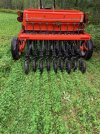

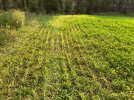
Such an awesome setup you got there sir!I have never done the tissue analysis but I understand that you pull everything from a 2'X2' section of the plot, dry it out and then send it to the lab? May have to give that a try.
Yes - rye and radish is very doable. In the fall I do typically drill some rye into my clover strips around the edge of my plots and sometimes on the seeded travel corridors and I do usually get fair results. I think I will definitely give this a try in some of the alfalfa plots. I'll let you know how it works out.
Thanks for your kind comments. I will definitely keep in touch with you....as long as you continue to allow me to pick your brain - LOL.
View attachment 42896
View attachment 42897
View attachment 42898
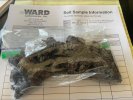
BH, is there a certain result that would cause you to change your management strategy?View attachment 42928
Never stop testing!
I recently pulled this soil sample in an area that I plan to put a large garden. So do you think this is the soil from where the garden will go? Answer: no.
This is actually soil from a nearby tree line - that has not been disturbed in 30+ years. This is my control for this area. I will then pull my garden samples and continue to soil sample over the years - to maintain my nutrient management plan.
We simply cannot know what has or has not been done to a soil before we took over. By pulling a sample from a nearby undisturbed area we can get somewhat of an idea on the natural conditions of the soil and how we can work to regenerate to that point or better it. Be it a garden foodplot or farm field - this is worth considering.
BH, is there a certain result that would cause you to change your management strategy?
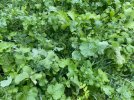
Really good link there on principle 1. Could be a post all on its own, it's so important. Thanks for sharing.Soil Health Friday – Why do I think tillage has its place?
Over the years “soil health” has been thrown around and can be undeniably polarizing. There is a massive movement from the garden to agriculture space that often divides those who are no-till vs. those who till. In the food plot space, it may be even more polarizing as many squeeze their finances to afford a no-till drill and steel roller-crimper for a part-time hobby.
Now, before we think this is going to be an article that is all pro-tillage, I hate to disappoint you, but it won’t. I also will highlight my hypocrisy, as I am the gardener and food plotter who has dreamed of the day of owning a no-till drill and has preached about no-till for years.
What I have learned is there is a continuum in the soil health, farming, gardening, and food plotting industry that everyone falls on, and to impact soil health - we need to appeal to the masses and just get folks started.
I want this article to be focused on inclusion and the importance thereof. The goal of find a way to support all people in the pursuit of better soil conservation and soil health. To achieve greater inclusion, I think we must start by identifying the ideal system (at least based on what we know today).
The ideal system would maximize the six soil health principles. (noble research institute cited below). A no-till drill to reduce disturbance, keeping thatch on the ground, using diverse cover crop mixes (Vitalizeseed.com), etc. will help to maximize these efforts.
The six soil health principles are:
- Know Your Context
- Cover the Soil
- Minimize Soil Disturbance
- Increase Diversity
- Maintain Continuous Living Plants/Roots
- Integrate Livestock
So, let’s talk tillage. What if a guy will not be interested in soil health if he can't disc or till? Do we just give up on that cohort? Or can we work together to explain the damage of tillage, chemical fallowing, etc., and possibly get them to consider a form of conservation tillage? I will take the latter and find a plan that works for that grower's context.
Conservation tillage is light tillage that leaves 30% or greater thatch on the top of the surface of the field. Some might think of vertical tillage as a popular means of conservation tillage, for example.
My theory is that if we can be inclusive and teach all about the principles of soil health and just get someone started, we can fine-tune the processes and work towards idealism later.
To be clear, we know that tillage causes damage to fungal networks, and soil aggregates, and pumps oxygen into the system which overstimulates our microbes and can facilitate oxidation reactions that tie up our nutrients. A heavy tillage system, without cover crops and huge reliance on inputs is destined for degradation of the soil profile. Similarly, no-till without diverse cover crop mixes, crop rotations, etc. will plateau in its benefits. This brings us back to the 6 soil health principles, the more of these we involve in our system the faster our soil's potential is realized.
At Vitalize Seed we want everyone to feel more educated and confident in implementing a soil health plan that works for the growers’ goals on their slice of heaven. Each year working towards fewer synthetic inputs, less disturbance, more diversity, and better healthier soils.
We have years of experience in testing our mixes in no-till methods, and we know that we can reduce to eliminate the need for synthetic inputs by taking advantage of biology and nutrient cycling in our wildlife pastures and gardens, using VitalizeSeed diverse, well-balanced mixes.
We hope you will give building soil a try! Enjoy the journey and build better soils!
AT
View attachment 42991
